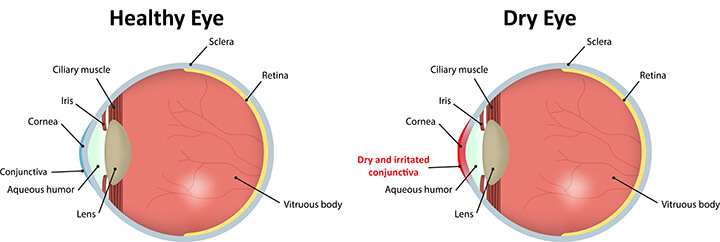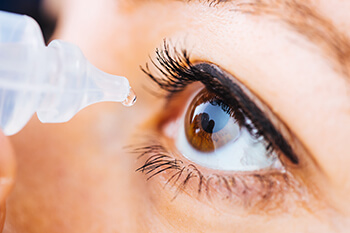Dry Eye
If your eyes feel dry, gritty, itchy, or irritated, you might have a condition called “dry eye.” Dry eye is common in dry or windy weather. It is more common in women than men, especially around menopause in middle age. Dry eye can also be part of another medical condition, such as Sjögren’s syndrome. It can also happen after LASIK vision correction surgery.
Using a computer or other
What happens in dry eye?
Your eyes produce tears even when you are not crying. Their steady supply of tears keeps your eyes moist, protected, and comfortable. In dry eye, your eyes might not be making enough tears to do this. Or the tears might be drying up (evaporating) or draining away from your eye faster than normal.

Can dry eye be treated?
Yes. There are many different treatments you can try, from eye drops to surgery. You can buy some eye drops without a prescription, or your eye doctor can prescribe drops or ointment. Some drops moisten your eyes, and some help your eyes make more of your own tears.

When artificial tears are not enough, there are two prescription eye drops for dry eyes. They contain the medicines cyclosporine (Restasis) and
Your doctor can also do a procedure to plug the small hole where tears drain away from your eye. The hole is called the punctum (pronounced “PUNK-tum”) and it is at the inner corner of your eye. Your doctor can put in a tiny device called a
You might also make some changes in your daily habits to help dry eye. For example, your doctor might ask you to drink more water or purchase a humidifier. You might take flaxseed oil or switch to a different type of contact lenses.
How your eye doctor can help
Dry eye can be a frustrating condition. Working with an experienced eye doctor can help you find answers sooner than you would on your own. It can also help you keep your eyes as healthy as possible. If your eyes feel dry, itchy, or irritated, talk to your eye doctor about it. Dry eye is a medical condition and treatment is available.
Learn more about dry eye from the American Academy of Ophthalmology.
